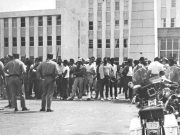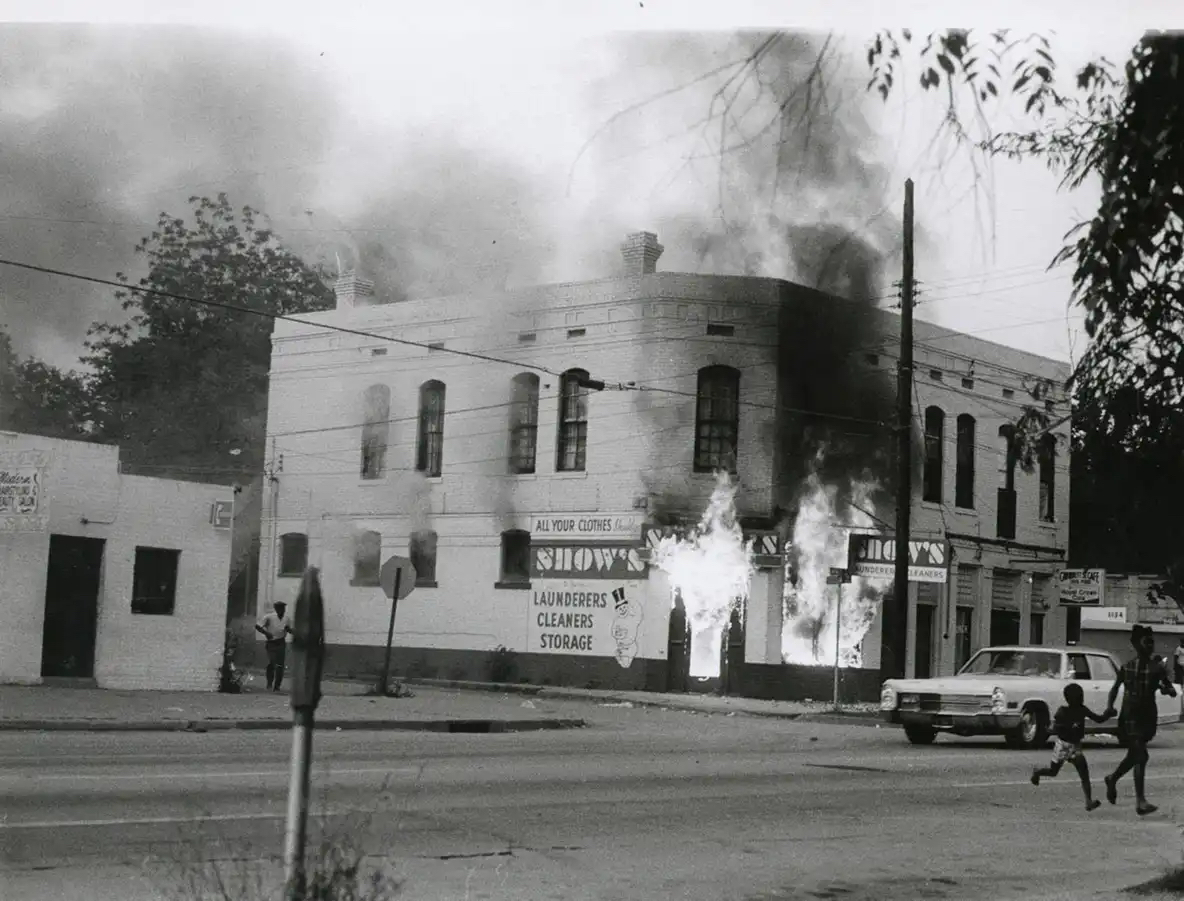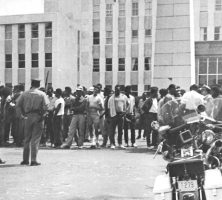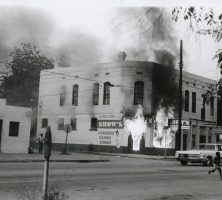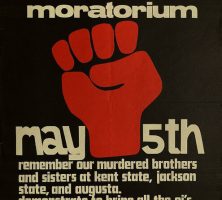The Augusta Riot was a major Black uprising against police violence, sparked by the brutal killing of Black teenager Charles Oatman in the Richmond County jail. Beginning in the afternoon on May 11, 1970 and peaking around midnight with as many as three thousand participants, it was the largest Black rebellion in the civil rights era South.
Black rebellions were an intrinsic part of the era’s social ferment. From May 1968 to December 1972, in mid-size and small cities across the American landscape, Black Americans engaged in violent protest—overturning cars, ransacking stores, burning buildings—a staggering 1,949 times. Called “riots” in the dominant discourse, these rebellions were spontaneous political acts, often provoked by specific instances of police brutality. They were visceral, forceful repudiations of the status quo.
Despite incremental civil rights gains in the 1960s—desegregation of public accommodations, a rising number of Black elected officials—Augusta remained a Jim Crow city in 1970. Most Black citizens labored for white employers in low-wage jobs, rented substandard housing from white landlords, and shopped in white-owned stores with inflated prices and face-to-face humiliations. White political leaders alternately ignored or minimized Black citizens’ grievances. And undergirding white power was the constant threat of violence: police harassment and brutality were so routine that, in the words of one local activist, “police controlled this community like it was a plantation.”
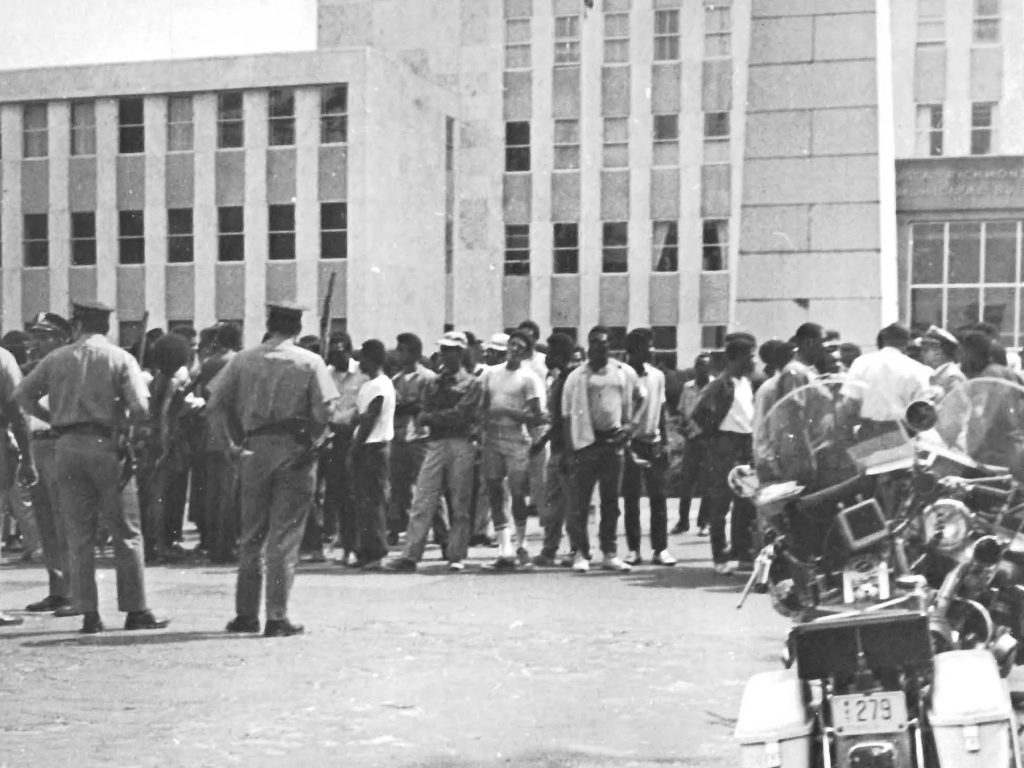
In the face of these depredations, the appeal of Black Power was growing. A Black Panther Party chapter held rallies protesting police brutality and sought to develop a revolutionary consciousness; a student movement at Paine College embodied Black cultural expression and demonstrated against racial injustice; and a local Committee of Ten directly confronted white officials with longstanding Black grievances. Most basically, this local Black Power movement fostered fearlessness and an emboldened spirit of defiance.
The opposing forces of Black self-assertion and white intransigence ultimately collided on May 11, 1970. Two days earlier, word of the brutal killing of sixteen-year-old Charles Oatman began circulating in the Black community. Gentle, well-liked, and intellectually disabled, Oatman was the adopted son of a working-class Black family. In late March, he had mortally wounded his five-year-old niece in a tragic gun accident. Though Oatman did not have a criminal record, white authorities arrested him, charged him with murder, and placed him in the county jail. A month later, deputies brought his mutilated body to the hospital, claiming that he had fallen off his bunk and died. Incensed by the state’s disregard for Oatman’s life, Black citizens were determined to hold local officials to account.
A demonstration at the county jail on the evening of May 10 met with threatened violence by the sheriff’s department, but after a tense exchange, the sheriff acquiesced to pursue an investigation. Tensions escalated during a larger demonstration at the Municipal Building the following afternoon, when police confronted demonstrators with rifles and shotguns drawn. A delegation meeting inside with the sheriff then came outside and conveyed the news: the investigation had concluded, and the sheriff had charged two Black teenagers, also incarcerated, with manslaughter. Paine College student leader Oliver Pope was among those to address the crowd in the volatile moments that followed. With police aiming shotguns at him, he proclaimed, “this is warfare,” voicing the rage of many. “Tonight we’re going to war.”
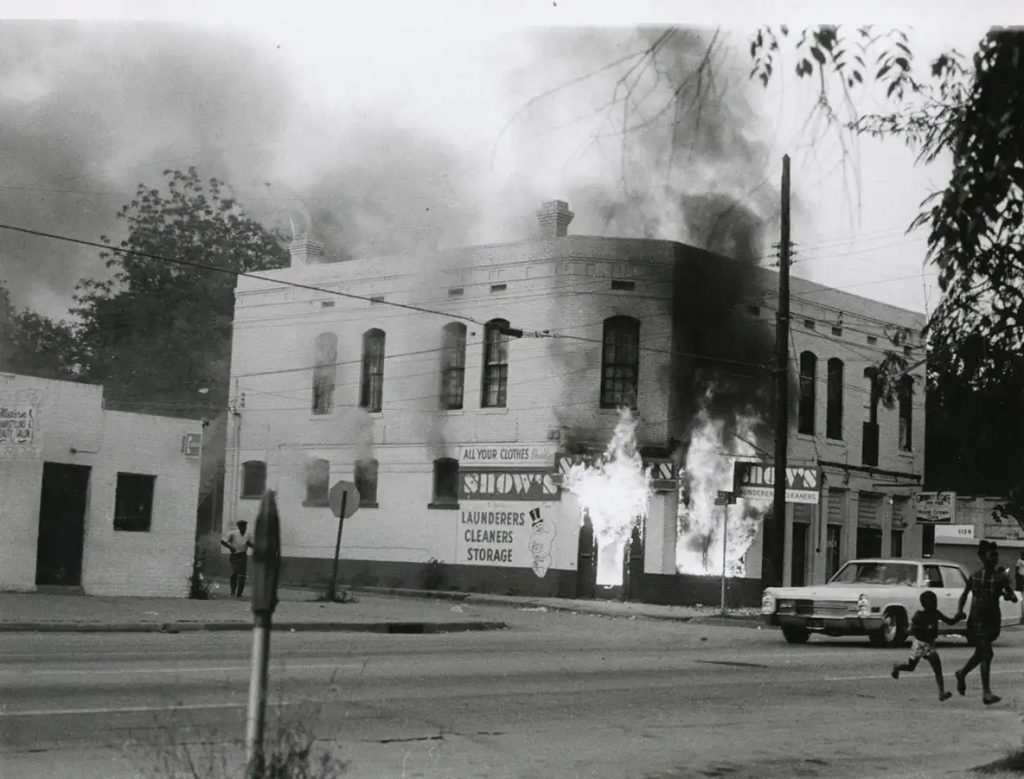
Some demonstrators left to reorganize, but others decided to act immediately and soon made their way to Broad Street, the principal white thoroughfare. There, they overturned vending machines and damaged window displays. Moving next to Gwinnett Street, the principal Black thoroughfare, they began the targeted destruction of select white- and Chinese American-owned businesses. Even more so than police interactions, such businesses were the most obvious, everyday site of the indignities and humiliations of white supremacy. As late afternoon became evening, the scale and scope of the rebellion spread.
Initially focused on protecting Broad Street, police took more aggressive measures as night fell, making mass arrests and, after Captain James Beck gave shoot-to-kill orders, firing shotgun blasts. Police violence quelled the rebellion by dawn. Black protestors had damaged $1 million worth of property and wounded thirteen white motorists. Augusta police had arrested three hundred Black residents, wounded at least sixty, and killed six: Charlie Mack Murphy (age 39) William Wright, Jr. (18), Sammie McCullough (20), John Stokes (19), John Bennett (28), and Mack Wilson (45). All six men were unarmed, and all had been shot in the back.
Local and national groups quickly mobilized to seek redress, with Civil Rights, Black Power, and New Left activists demanding justice for Oatman and the “Augusta Six.” In Washington, Black congressional leaders called on the Justice Department to investigate, and Howard Law students worked with local lawyer John H. Ruffin, Jr. to secure affidavits from witnesses to the police massacre. With Ruffin’s assistance, Cornelia Oatman filed a federal lawsuit against the sheriff, jailer, and judge alleging civil rights violations in the death of her son. In the fall elections, Carrie Mays—a community leader whose mortuary had received and prepared Oatman’s body—was elected to the City Council, becoming Augusta’s first councilwoman and the highest-ranking Black female official in the Deep South. The FBI spent much of the summer investigating civil rights violations for the Department of Justice. And in 1971, trustees at Paine College appointed Lucius H. Pitts, an alumnus, as the school’s first Black president.
But the local judicial system continued to operate as an instrument of white supremacy. With white judges, white prosecutors, and nearly all-white juries, the system convicted roughly 150 people active in the rebellion, Pope, and the two teenagers charged in Oatman’s death. The Department of Justice brought two white officers to trial, but they were acquitted by majority-white juries. The Augusta Police Department’s internal investigation found no wrongdoing. The mayor insisted in his year-end report that “the people of Augusta” owed “an everlasting debt of gratitude” to the department, and Captain Beck was elected chief that August. And white officials seized on the technicality that Mrs. Oatman had not legally adopted Charles, even asserting that she was trying to “perpetrate a fraud” upon the court. She lost legal claim to any damages.

Over time, Augusta’s rebellion (and Black rebellions more broadly) receded from national memory, even as Kent State—where National Guardsmen killed four white students, on May 4, 1970—became a touchstone for repressive violence. In 2018 a local, interracial group formed to recover and raise awareness of the real story of 1970, through public events, social media, oral histories, and an artistic and historical exhibit. Its work pushed the Department of Justice, through its Cold Case Initiative, to reopen investigation of the murders of Charles Oatman and the Augusta Six in the summer of 2021.


